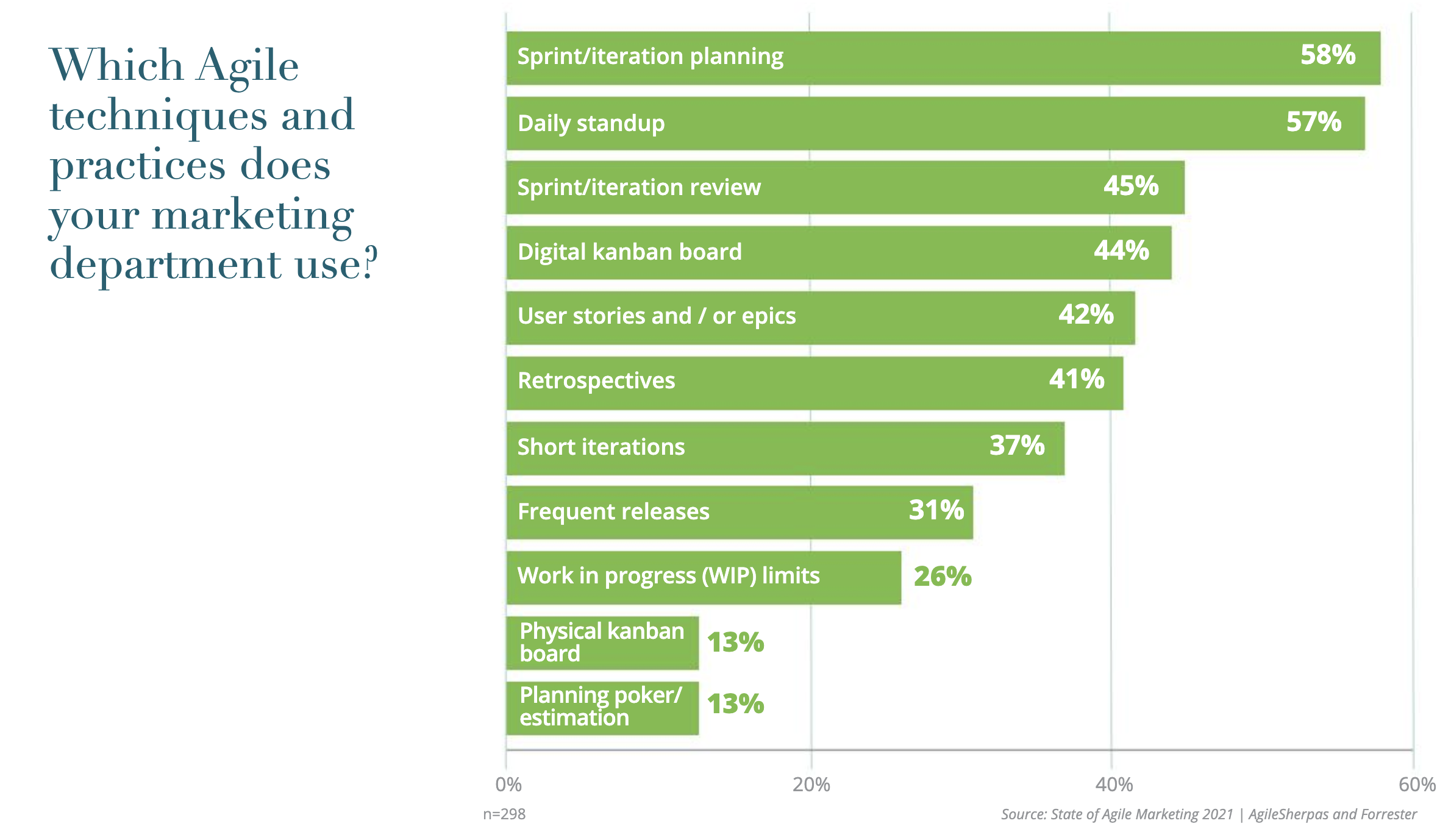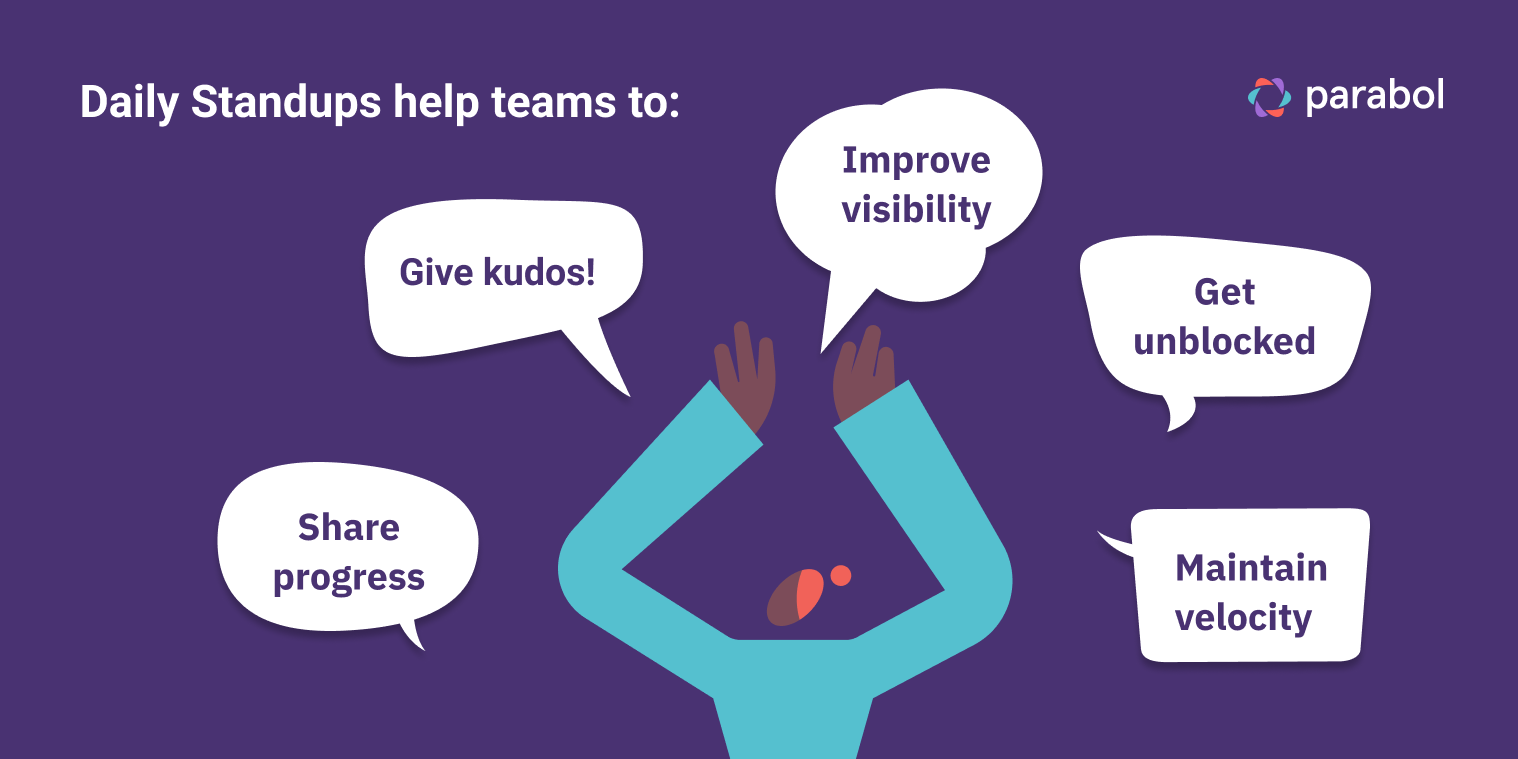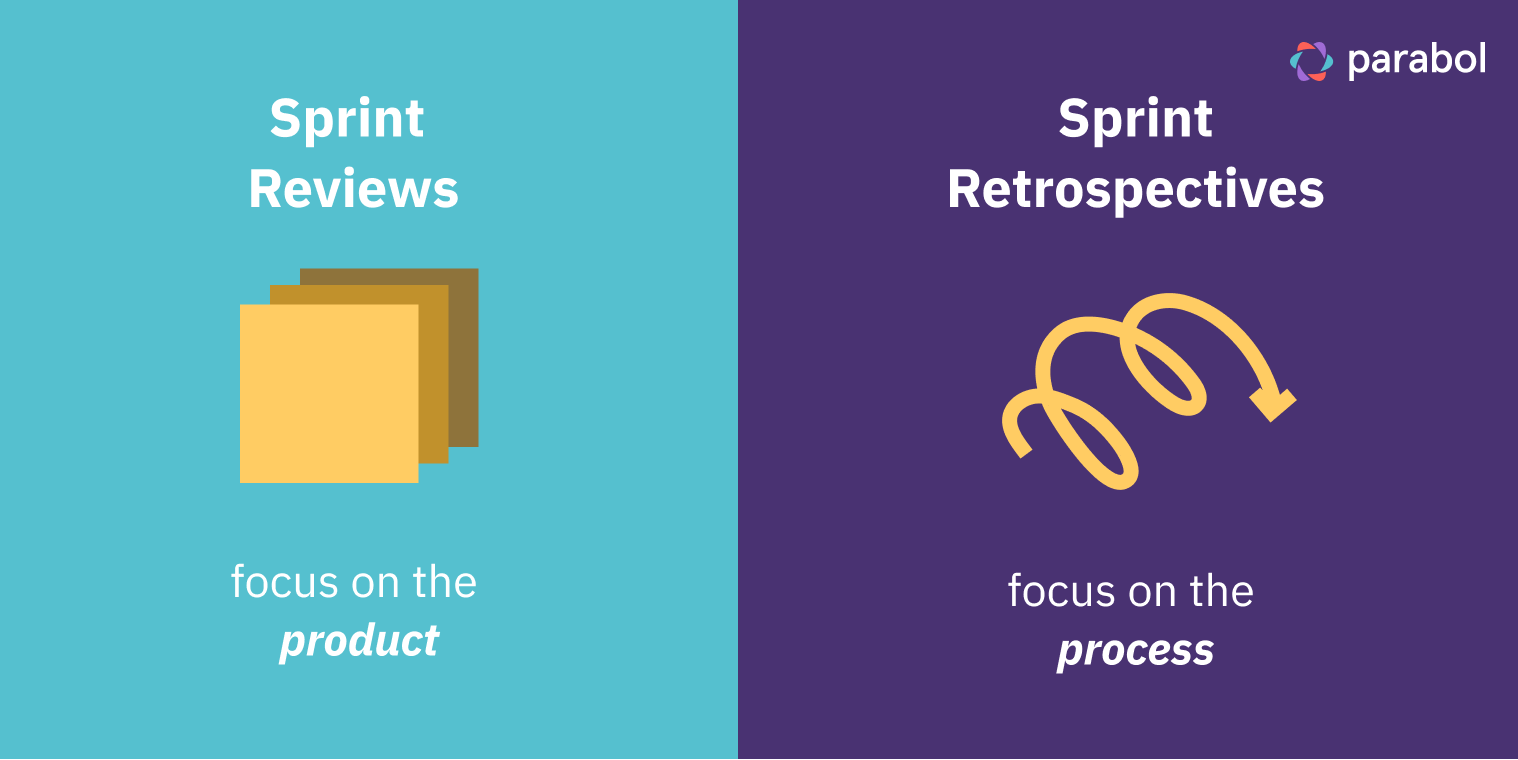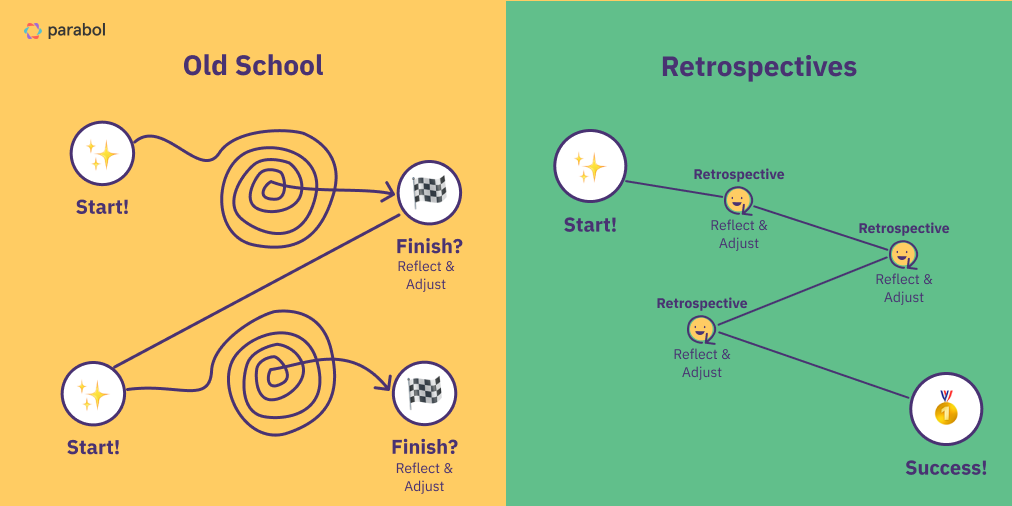The 4 Agile Meeting Types Marketing Teams Need
Agile is becoming more and more popular with marketers every year. But understanding how agile meeting types designed for software development can be used by your marketing team isn’t easy.
You probably already know of some marketing teams using Agile meetings. You may have even tried some Agile meeting types yourself.
Once you start looking into Agile marketing, you can quickly start feeling like you’re trying to drink from a firehose. Worse, most of the available content wasn’t written for marketers like you.
That’s why we’ve created this simple guide to talk about how marketing teams can benefit from the four main agile meeting types.
So before you mute yourself to curse your 18th online meeting of the week, or fall asleep reading another Agile methodology book, see why and how marketers are making their meetings achieve more.
Why Agile meetings don’t feel like regular meetings
As a marketer, you may be used to quarterly or month-end reporting, project kick-off meetings, weekly status update meetings, etc. But agile marketers do things a bit differently.
Instead of long cycles and projects, agile marketing is about shortening those cycles to be more nimble, responsive, and effective. More and more teams are finding value in an agile marketing approach.

In 2020 alone, the number of marketers using Agile increased by roughly 25%.
Instead of getting bogged down with ad hoc meetings that “could have been an email”, Agile gives teams a fixed and minimalist schedule of recurring meetings. This frees up space for the kind of deep work that people want to be focusing on.
Let’s break down what differentiates an Agile meeting from a regular marketing meeting:
- 🛠️ Greater focus on the job to be done: The first key difference is that Agile meetings are hyper-focused. We’ll break down the exact focuses of various meeting types below. But having a fixed schedule of meetings on a regular cadence each of which has a specific job to do, makes meetings much more focused.
- 🎩 Clearer roles within meetings: Tied in with the added focus, Agile meetings usually have a clearly defined facilitator whose sole job is to keep the meeting on track and on time. This goes a long way towards ensuring Agile marketing meetings don’t drift the way traditional ones often do.
- ⏰ More efficiency: Agile marketing meetings have a clear focus, clear job to be done, and clear roles. This means teams can reach more defined meeting outcomes in a shorter period of time, or have deeper and more meaningful conversations than they would otherwise. Efficient meetings mean everyone can get back to the writing, building, creating or strategizing work that impacts the bottom line.
Now that we have a sense of what differentiates Agile marketing meetings from regular meetings, let’s dive into the specific meeting types and what they can help you accomplish.
Sprint planning to avoid stalling
Agile Sherpas recently polled marketers around the world about Agile marketing. They found that out of all Agile marketing techniques, the greatest number of marketers (58%) said they use sprint planning. Whether or not they decide to strictly adhere to an Agile framework, they get a lot of value out of sprints. But what is a sprint and what makes them so popular?
The majority of Agile teams work in sprints. These are short periods of work lasting anywhere from 1-4 weeks. Each one of these sprints begins with a sprint planning meeting. So, instead of meeting monthly, quarterly, or even annually to plan out your marketing activities, you do this on a far more regular basis.
That may sound like just more meetings, but the problem usually isn’t the number of meetings but their quality (and what the participants take away).
Sprint planning meetings are actually a time saver. Think about how much time is wasted when team members need to go back and forth clarifying what needs to happen, when it needs to be done, etc. Regular sprint planning meetings helps to prevent people agonising over what to do next, keeps work flowing, and gives team members short achievable deadlines.
As part of sprint planning, some teams find value in estimating the effort required to complete various projects in a sprint – often using a planning poker style tool. This allows you to accurately calculate your velocity, realistically estimate how much effort tasks involve, and generally focus more on doing valuable work instead of ensuring everyone is kept busy.
Daily standups to stay on the same page
If your sprint planning meetings set out your agenda for each sprint, the Daily Scrum or daily standup meetings are what keeps everything moving during the course of your work. Daily meetings might sound like a chore, but 57% of marketing teams report using daily standups to keep the pulse of their work, making them the second most popular agile meeting type after sprint planning.
Standups are short, focused meetings, which is where they got their name (participants should literally remain standing to make sure everyone doesn’t get too comfortable and let the meeting drag). This helps ensure daily standups stay between 5 and 15 minutes.

While there are different ways to run a standup (and we believe in doing what works for you), in most cases it focuses on what each participant did the day before, what they will do that day, and mentioning anything preventing them from progressing. It’s designed to quickly identify problems and remove any roadblocks holding up work.
So, when you’re thinking about the value of Agile marketing for your team, consider that 10 or so minutes every morning can ensure each team member has full visibility of what’s going on and you hear about any issues within a single workday.
Not a bad trade-off for a few minutes.
Sprint reviews to process learnings
Even if you have some familiarity with Agile marketing, you may have never heard of a sprint review. Fewer than half of the marketing departments we surveyed are currently leveraging this agile meeting type but in our experience it’s a valuable way to take a look at the big picture after focusing so narrowly during a sprint.

A sprint review fits in at the end of a sprint before doing a retrospective. In this meeting, everyone reviews what was accomplished in the sprint, what learnings were achieved, and the team may demo or present the progress they’ve made.
Why do all this? It’s a way to focus on what value was delivered during a sprint instead of simply focusing on getting everything done on time. By showing the stakeholder what came out of a sprint, every person on the team has a chance to shift from checking boxes to thinking about what their actions resulted in. It also consolidates what might otherwise be many smaller stakeholder meetings into a single one, getting everyone on the same page about what the stakeholder or team needs.
In the world of marketing, it’s all too easy to focus on the work done and not the end results. That thinking differentiates mediocre marketing teams from excellent ones. Coming together as a team to demonstrate your work is also simply an excellent way to build team morale and make work feel more meaningful.
Sprint retrospectives to improve processes
It’s all too tempting to finish a successful sprint and think “great, now let’s do it again!” but stopping for a moment to reflect and find ways to improve is a key element of all Agile marketing frameworks. Otherwise, you risk losing potential learnings because they simply never have a chance to surface.
That’s why every sprint, successful or not, should end with a retrospective.

Marketers are used to critically examining the results they achieved in a reporting period rather than the processes or teamwork that helped them along the way. Sprint retrospectives bring value to Agile marketing teams by giving them a dedicated meeting to turn working experiences into long-term process improvements.
In this meeting, your team focuses on three things: what went well, what could be improved, and what you will do differently in the next sprint. It’s only attended by the core team, making it easier to be honest without worrying about how they appear in front of stakeholders.
While postmortems at the end of larger marketing projects are fairly common, smaller retrospectives at the end of each sprint empower your team to find small ways to improve on a more regular basis.
So while retrospectives might not come as naturally to marketing teams, that’s precisely what makes them so valuable. Between a sprint review and retrospective, a team has the chance to pause and reflect on the value they’ve created as well as the processes that went into creating that value. Together they make a powerful combination.
What do these elements create together?
Instead of your calendar being filled up with ad hoc meetings that can seem frustratingly aimless, agile gives marketing teams a fixed structure of meetings that helps them see the big picture and focus on continuous improvement.
Agile marketing teams have the roles and meetings laid out here to keep aware and focused in fast-paced marketing environments. Team members feel they have a voice and that their work translates into real value. Their suggestions are heard and they know the entire team can and will make adjustments as needed. Instead of feeling stuck, they feel emboldened.
If implementing all of these meeting types at once sounds intimidating, remember that you can be flexible with what you use. Agile rules aren’t set in stone for exactly this reason.
It can be difficult to change everything at once, so you may consider trying some Agile elements and see how they work out. For example, start incorporating daily standups or retrospectives first to test the waters. If these Agile marketing techniques work for you, you can try more.
Flexible, nimble, accountable, and continuously improving marketing teams can achieve their key business goals more effectively and efficiently.
No wonder Agile meetings are getting more popular among marketers every year.








